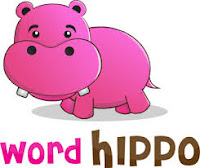Here are ideas to help you in your writing, most deal
with background and research but there a few tidbits that just might help you write better and more engaging stories.
 A quick source for finding that synonym or word that
has to be just right is Word Hippo. Incredibly simple, I use it all the time to
shake just the right word out my head. It’s not a replacement for my old Roget
hardcover, but it does help when on a writer’s nonstop creative bender.
A quick source for finding that synonym or word that
has to be just right is Word Hippo. Incredibly simple, I use it all the time to
shake just the right word out my head. It’s not a replacement for my old Roget
hardcover, but it does help when on a writer’s nonstop creative bender.
Many of my stories include foreign language phrases to
add some color and texture. As they say, “When in France …” Idiomatic phrasing
is available through many sites on the web, but I use Google translate to
retrieve a quick translation. It is always a good idea to find a native speaker
to make sure you have the right translation during editing. Remember, perro (dog), puta
(hooker), puro (cigar), and punta (tip/nib), all sound similar as I
found out when I was trying to find a cigar in Mexico. You can image the
confusion on the clerk’s face when I asked, Tiene
perros? and then proceeded to try the others. Ain’t language great?
Google Earth is one of the most brilliant pieces of
software imagination - ever. With its various layers, especially Photos, I have
found a safe-house for my story in Paris, graffiti on the walls of the Grand Canal in
Venice, and obscure baseball fields in Cuba, all making my stories more
interesting and readable. Most of the imagery is recent, especially in the U.S.
and Europe. With Photos you can actually see what people are wearing in the
location you are writing about. And with its 3D Buildings feature you can
literally jump roof top to roof top. Very cool!
Microsoft’s OneNote has become indispensable for helping
me to keep my research organized and easily accessible. This software usually
comes with the MS Office Suite package. There are a few bugs about it but it
does enable you to copy and paste your online research from sources, such as
Wikipedia, directly into pages and folders, as well as scans from others
sources. As in all research you need to be organized but the
quick access while you write is easy and seamless. And it’s good for pulling together
those footnotes and bibliographies for you non-fiction writers.
I am continually amazed by those that fight through
Microsoft Word and use it as the formatting software for their final book
layout that will go to the offset printer or print-on-demand printer. Sure it can
work but the aggravation is endless and, like dominoes, a mistake can push
through the manuscript from one end to the other.
Invest in InDesign and some of the other excellent software in the
Creative Suite family from Adobe, such as Photoshop and Illustrator. If you
are a self-publisher these are critical tools for your profession, learn them –
it isn’t hard. And your final product will look the better for it.
I would like to hear about other tricks and short-cuts
that you writers use. Post a comment and share.
More Later . . . . . .

No comments:
Post a Comment